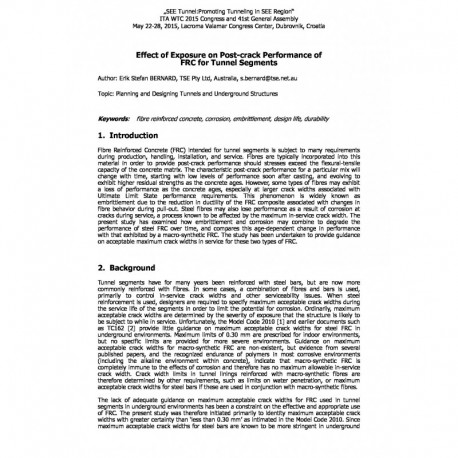Cart
0
0
No document
0,00 €
Total
Document successfully added to your shopping cart
Quantity
Total
There are 0 items in your cart.
There is 1 item in your cart.
Total documents
Total shipping
To be determined
Total
Search & filter
Search for a publication
Search & filter
Effect of Exposure on Post-crack Performance of FRC for Tunnel Segments
wtc2015_fullpaper_bernard
Fibre Reinforced Concrete (FRC) intended for tunnel segments is subject to many requirements during production, handling, installation, and service. Fibres are typically incorporated into this material in order to provide post-crack performance should stresses exceed the flexural-tensile capacity of the concrete matrix. The characteristic post-crack performance for a particular mix will change with time, starting with low levels of performance soon after casting, and evolving to exhibit higher residual strengths as the concrete ages. However, some types of fibres may exhibit a loss of performance as the concrete ages, especially at larger crack widths associated with Ultimate Limit State performance requirements. This phenomenon is widely known as embrittlement due to the reduction in ductility of the FRC composite associated with changes in fibre behavior during pull-out. Steel fibres may also lose performance as a result of corrosion at cracks during service, a process known to be affected by the maximum in-service crack width. The present study has examined how embrittlement and corrosion may combine to degrade the performance of steel FRC over time, and compares this age-dependent change in performance with that exhibited by a macro-synthetic FRC. The study has been undertaken to provide guidance on acceptable maximum crack widths in service for these two types of FRC.




